A Message to the Future
In the roughly 70 years since humans first split the atom, we have accumulated between 250,000 and 300,000 tonnes of high-level nuclear waste that will remain radioactive for at least 100,000 years. Designing a stable, secure repository for these materials is only half the battle: the other half is to design a ‘Do Not Enter’ sign that will remain intelligible for a period several times longer than the lifespan of any recorded civilisation.
Cover photo: A commercial low-level waste site in operation since 1965 in Hanford, Washington. The site uses conventional shallow-land burial of packaged waste in unlined trenches, approximately 244 m (800 ft) long, 46 m (150 ft) wide and 14 m (45 ft) deep. This site, which stores low-level radioactive waste such as trash, clothing, tools, hardware and equipment that have been contaminated by radioactive substances, is scheduled to be closed down by 2056. (Photo courtesy of the US Nuclear Regulatory Commission.)
This is a design brief for the ages.
Every year, tonnes of lethally radioactive material are added to the world’s nuclear waste storage facilities, mostly surface-level installations where waste is stored in cooled water tanks that shield the environment from the deadly radiation. This is clearly not a long-term solution, as any resident of Fukushima can attest. These installations are vulnerable to any number of threats such as earthquakes, fires, power outages and terrorist acts, but most importantly, the lifetime of these facilities is measurable in decades, whereas the lifetime of the radiation hazard is measurable in millennia.
At present, burying the waste in the most geologically stable locations available seems to be the only viable long-term solution. All over the world, projects of this type are in various stages of planning and preparation as the first generation of storage facilities is starting to fail. These new sites are intended to hold spent nuclear fuel and other castoffs of the atomic age indefinitely (regulations vary by country, ranging from 10,000 to 100,000 years), requiring no maintenance or supervision once they are completed and sealed. The biggest threat to their integrity will be future human interference. This, then, is the brief: prevent the inadvertent intrusion by humans into these deadly tombs for at least ten millennia.
To consider this problem is to come face to face with the frailty of human civilisation. Ten thousand years is approximately twice the length of recorded human history. No human structure has ever lasted that long, and no civilisation stretches back even half that length. The Great Pyramid, the last remaining of the Seven Wonders of the World, stands denuded and emptied, a shell of its intended self and not yet 5,000 years old. The countries now engaged in nuclear industry all have lifetimes measured in mere centuries.
During the relatively brief existence of our nuclear power industry we have generated tens of thousands of tonnes of high-level radioactive waste that will remain lethal for hundreds of generations to come.
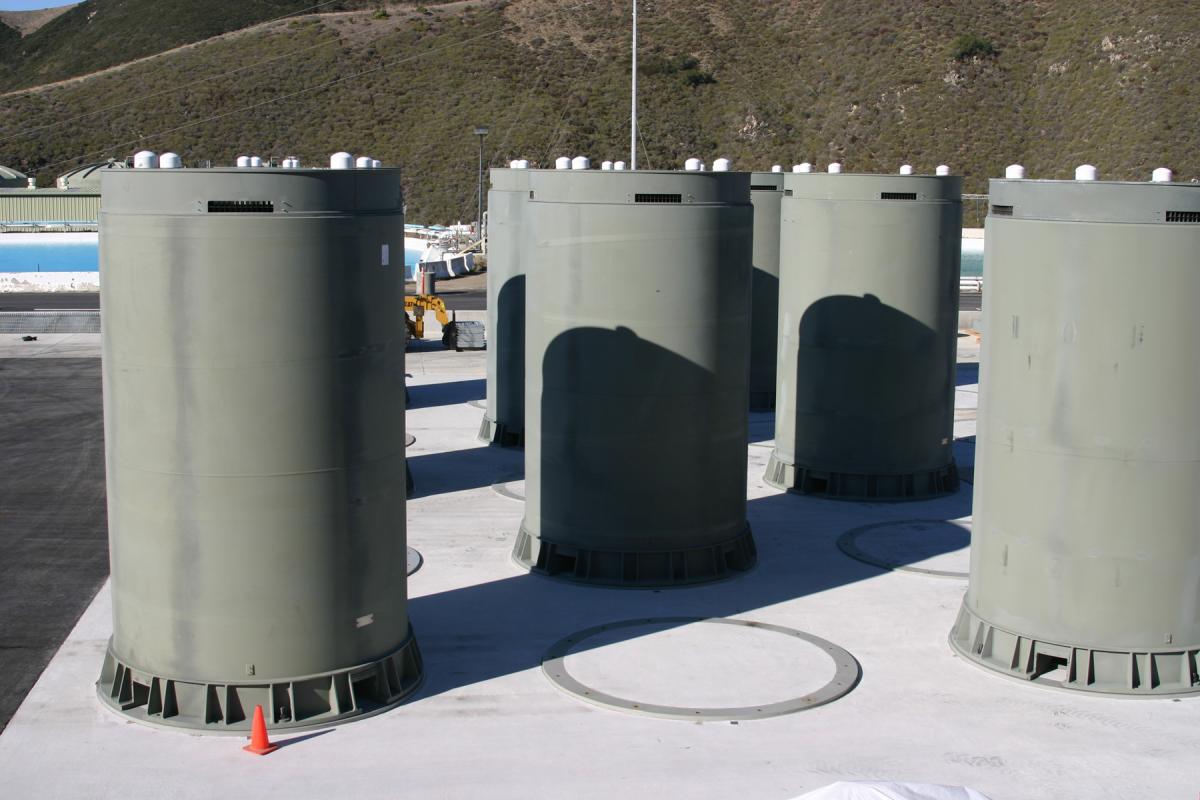
Dry cask steel cylinders at Diablo Canyon Power Plant in California. This is a storage method for high-level radioactive waste, usually spent nuclear fuel that has already been cooled in a fuel pool for at least one year. Dry cask cylinders are stored in a concrete vault that provides radiation shielding, a thirty to one-hundred-year interim solution intended to give the US time to develop and build a long-term storage facility. (Photo courtesy of the US Nuclear Regulatory Commission.)
It is also to confront the question of how human history will unfold over the next ten millennia, how to communicate with the essentially foreign civilisations of the distant future. In Expert Judgment on Markers to Deter Inadvertent Human Intrusion into the Waste Isolation Pilot Plant, a 1984 report prepared by Sandia Laboratories for the American Office of Nuclear Waste Isolation, researchers proposed three broad scenarios for the future development of technology: 1) a steady increase from today’s level, 2) a steady decline from today’s level, and 3) a fluctuating ‘seesaw’ pattern of advancement and collapse.
The third scenario is the most troublesome, since a steady increase in technology would presumably imply a steadily increasing ability to detect and handle the dangers of radioactivity, and a steady decline would mean a loss of the ability to locate and release the waste at all. A seesaw pattern, however, would mean a periodic return to the technical competency required to find and excavate the site, with the high probability of a cultural discontinuity severe enough to leave future diggers ignorant of the dangers involved.
Radioactivity is problematic in that humans have no natural ability to detect it; it cannot be seen, heard or touched. In large doses it kills immediately. In smaller doses it still kills, but over time, making it difficult to recognise the link between the illness and its source. Hence the necessity of a system to communicate the danger to future generations.
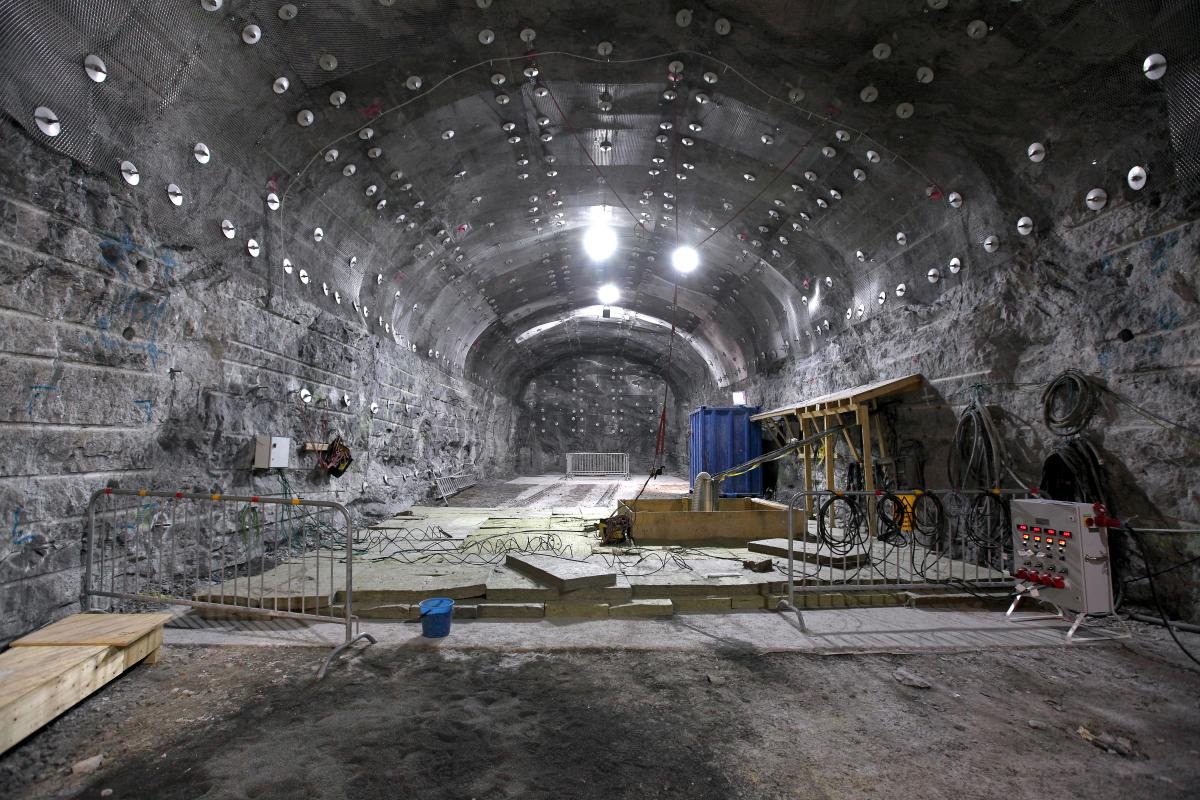
The Onkalo spent nuclear fuel repository, currently under construction in south-west Finland, 5km (3 mi.) from the Olkiluoto Nuclear Power Plant, will be the world’s first facility for the final disposal of spent nuclear fuel, storing radioactive waste at depths of 400–450m (1,312–1,476 ft). It is scheduled to begin operations in 2020, and should reach capacity by 2120, at which point the storage chambers will be encapsulated, and the access tunnel backfilled and sealed. The repository is designed to keep the waste secure for 100,000 years. (Image courtesy of Posiva Oy.)
This warning system must be durable enough to reach future civilisations, intelligible enough to be understood by them, and credible enough to be taken seriously. After all, the danger that the system must communicate (a deadly, invisible power of tremendous longevity) sounds much like an ancient curse put on a tomb, and contemporary humans have a history of disregarding ancient curses. The Indiana Jones franchise, to name just one example, celebrates adventurers who blithely ignore the warnings of their forebears, defeat all of their security measures and thus unearth deadly weapons of mass destruction.
You seem to enjoy a good story
Sign up to our infrequent mailing to get more stories directly to your mailbox.Would it not be better simply to leave the sites entirely unmarked? After all, the ancient tombs that have survived intact the longest are the ones that have remained hidden the longest. But isolation and secrecy only work to a point, and when they fail, they fail completely. In 2011, satellite imagery of Egypt revealed 17 lost pyramids and thousands of tombs. They are now, of course, targets for excavation. Furthermore, many sites like New Mexico’s Waste Isolation Pilot Plant (WIPP) are in regions where active drilling for oil or other resources is ongoing and likely to continue for at least a few more centuries. In any case, such installations are too massive to conceal permanently. Secrecy is not an option, so a message to the future must be prepared.
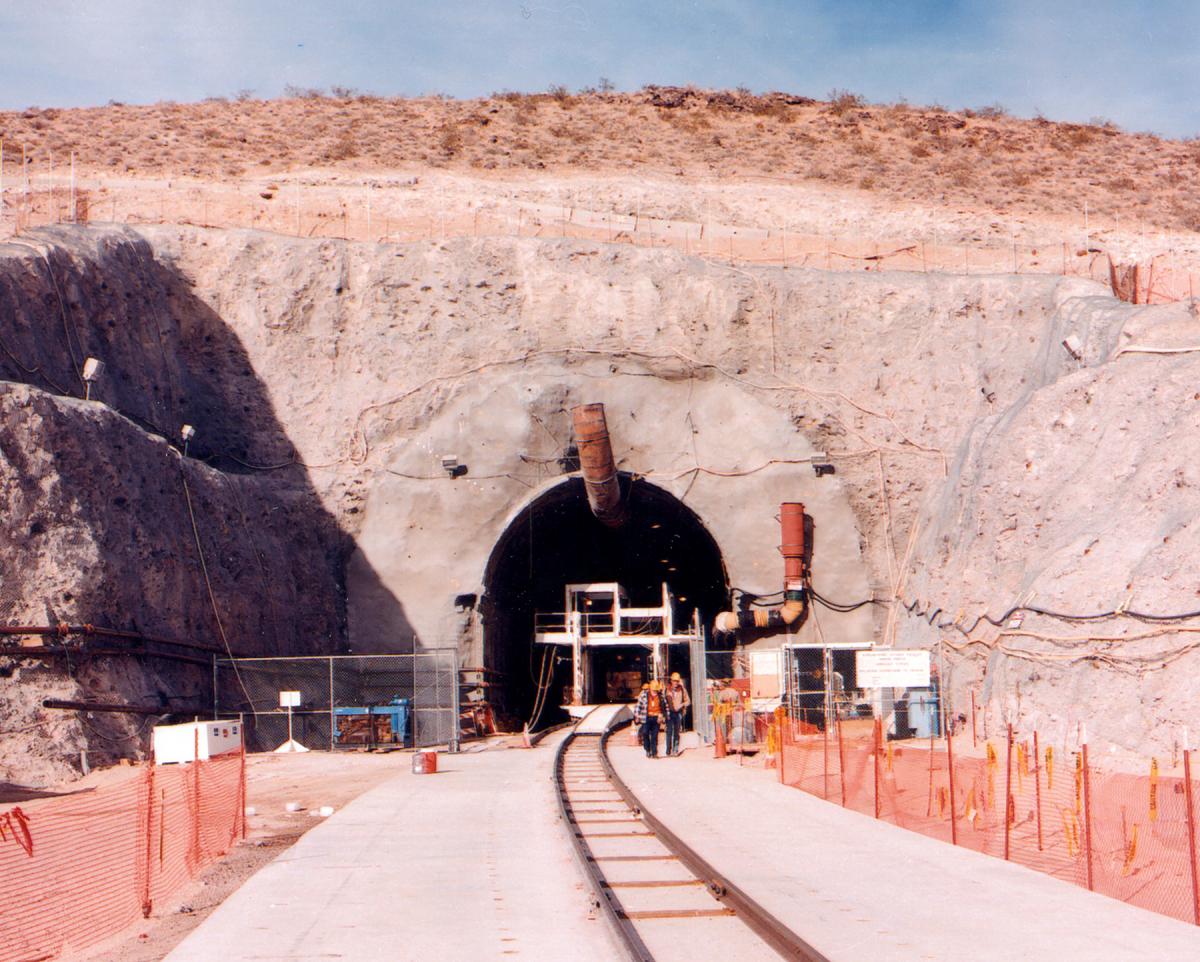
Proposed in 1987, the Yucca Mountain (Nevada), nuclear waste repository was to be a deep geological repository storage facility for spent reactor fuel and other high-level radioactive waste. It never went into operation, and President Obama cancelled the project in 2011, fulfilling an election promise to Nevadans. There is currently no permanent home for the spent nuclear fuel stored at 121 different sites around the US. (Photo courtesy of the US Nuclear Regulatory Commission.)
The late linguist and semiotician Thomas A. Sebeok and other researchers, observing that many of the longest living human institutions are religions, proposed creating an atomic priesthood. An artificially constructed folklore of rituals and legends would discourage ‘lay people’ from disturbing the repositories, while an elite council would be charged with guarding the true knowledge and history of the sites in much the same way that the Catholic Church has preserved and transmitted its message over millennia.
Religions, however, change over time. Far more religions have perished than exist today, and the ones that do exist would be unrecognisable to their founders, having gone through countless heresies, schisms and reformations. Also, few remaining religions are still centred on the geographic location of their founding, which is a serious problem since the intent of this endeavour is to protect a particular place. And even if the stability of the religion could be ensured, there are ethical questions raised by intentionally setting up such an institution and committing future generations to living with the potential of political and social repression, or even holy war.
Will future archaeologists look at the warning systems at nuclear waste repositories in much the same way as present archaeologists look at the curses inscribed on tombs full of artefacts?
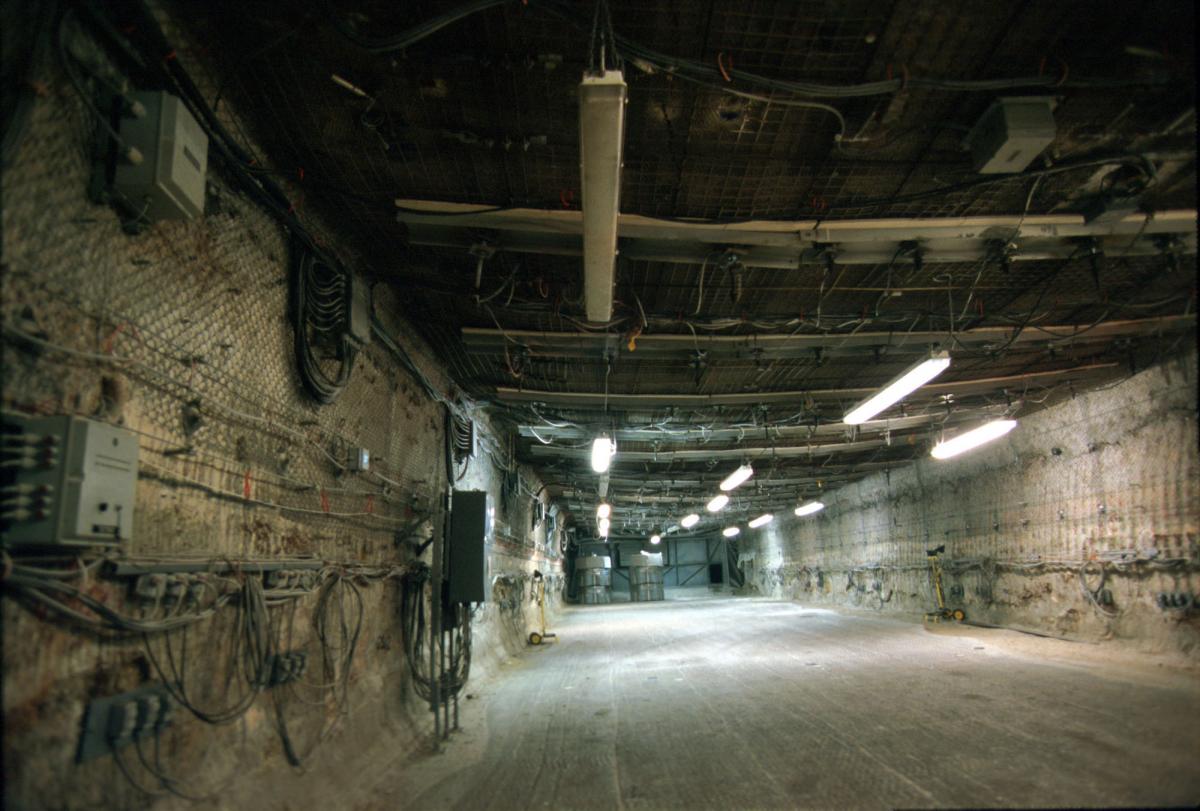
The Waste Isolation Pilot Plant (WIPP) 42km (26 mi.) east of Carlsbad, New Mexico is currently the only active deep geological repository for permanent disposal of radioactive waste. The WIPP facility doesn’t store high-level waste such as spent nuclear fuel, but only transuranic waste generated by nuclear weapons research and production. Even so, these materials are expected to remain lethally radioactive for approximately 24,000 years. The facility contains a total of 56 storage rooms located approximately 650m (2,133 ft) underground in thick salt formations. The plant is projected to continue accepting waste for 25 to 35 years, after which it will be permanently sealed. Over time, geological pressure will force salt into the empty spaces in and around the repository, completely isolating it from the surrounding earth. (Photo: Joe Raedle/Getty Images)
More decentralised mechanisms that would avoid these sensitive issues have been proposed by semioticians Françoise Bastide and Paolo Fabbri. Rather than seeking to mark the sites themselves, they suggest establishing a cultural understanding that the sites exist and are dangerous, and then breeding artificial warning plants and animals. These animals (Bastide and Fabbri recommend cats for their long history of coexistence with human civilisation) would carry information about the sites encoded in their DNA, or change colour in the presence of radioactivity, thus acting as living Geiger counters. Furthermore, these ‘radiation cats’ would be self-propagating, carrying their message into the future.
Leaving aside the question of whether breeding such warning animals is possible, however, such attempts to shape future behaviour through myth may fare no better than the ancient curses on the tombs. Just as many people today do not believe that a black cat signifies bad luck, the people of the future may not believe that a cat that changes colour signifies an invisible danger.
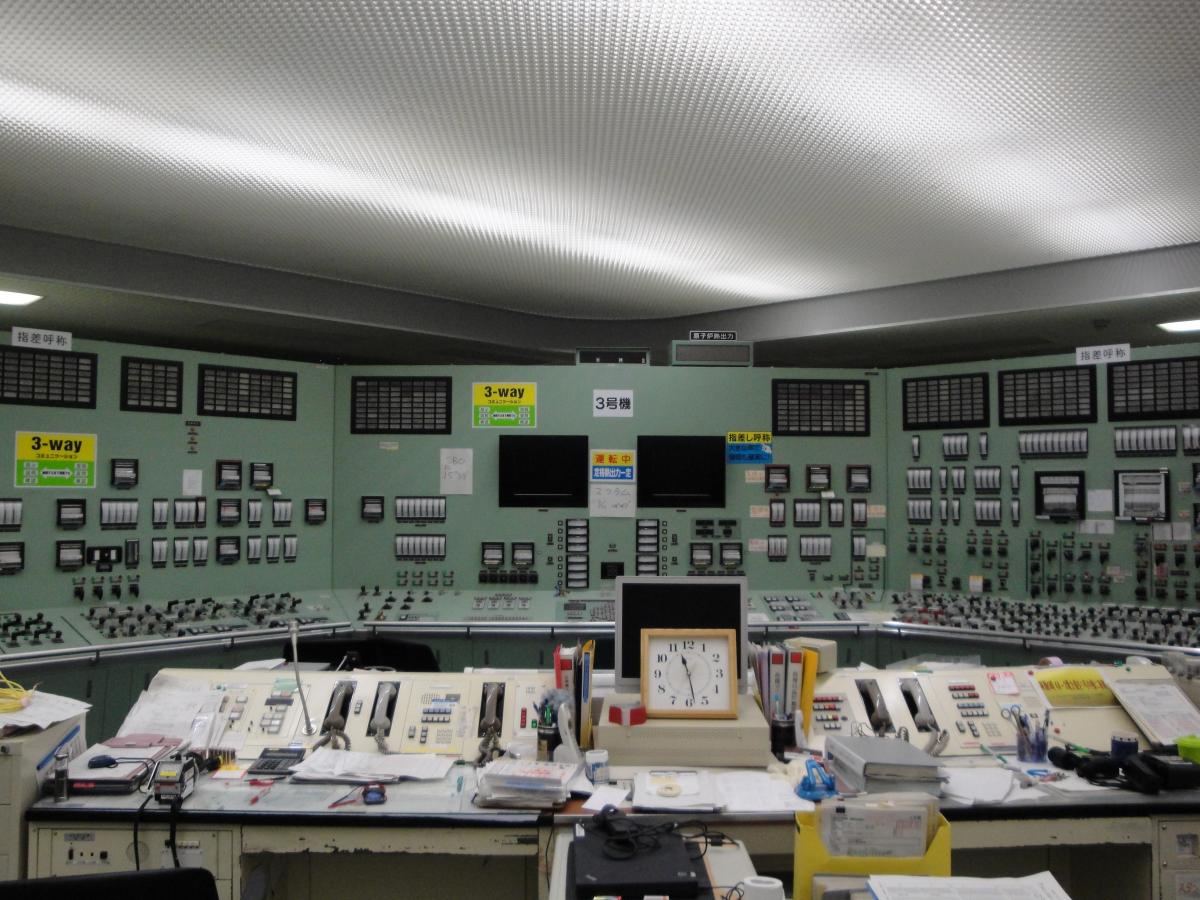
The central control room of Unit 3 at Fukushima Daiichi power plant, just after the lights went on Tuesday March 24, 2011. (Photo courtesy of Tokyo Electric Power Company)
Still others have proposed artefacts that operate from beyond the range of human interference. German physicist and author Philipp Sonntag has suggested constructing an artificial moon engraved with messages or equipped with some other means of communication. It could hang in the sky, plainly visible to scientists and codebreakers while out of the reach of vandals and treasure hunters.
Creating an artificial moon that will last 10,000 years, however, presents a whole new set of problems. At present, satellites rely on fuel to keep themselves in orbit; when the fuel runs out they fall to earth or become wandering hazards in the space lanes. Vanguard 1, the oldest artificial satellite still in orbit, is only 56 years old, and though it was originally expected to remain in space for up to 2,000 years, current projections estimate its total lifespan to be a mere 240 years. Furthermore, this approach compounds the problem of designing a message that will be sufficiently intelligible to distant generations, adding the necessity of making it sufficiently intelligible from space.
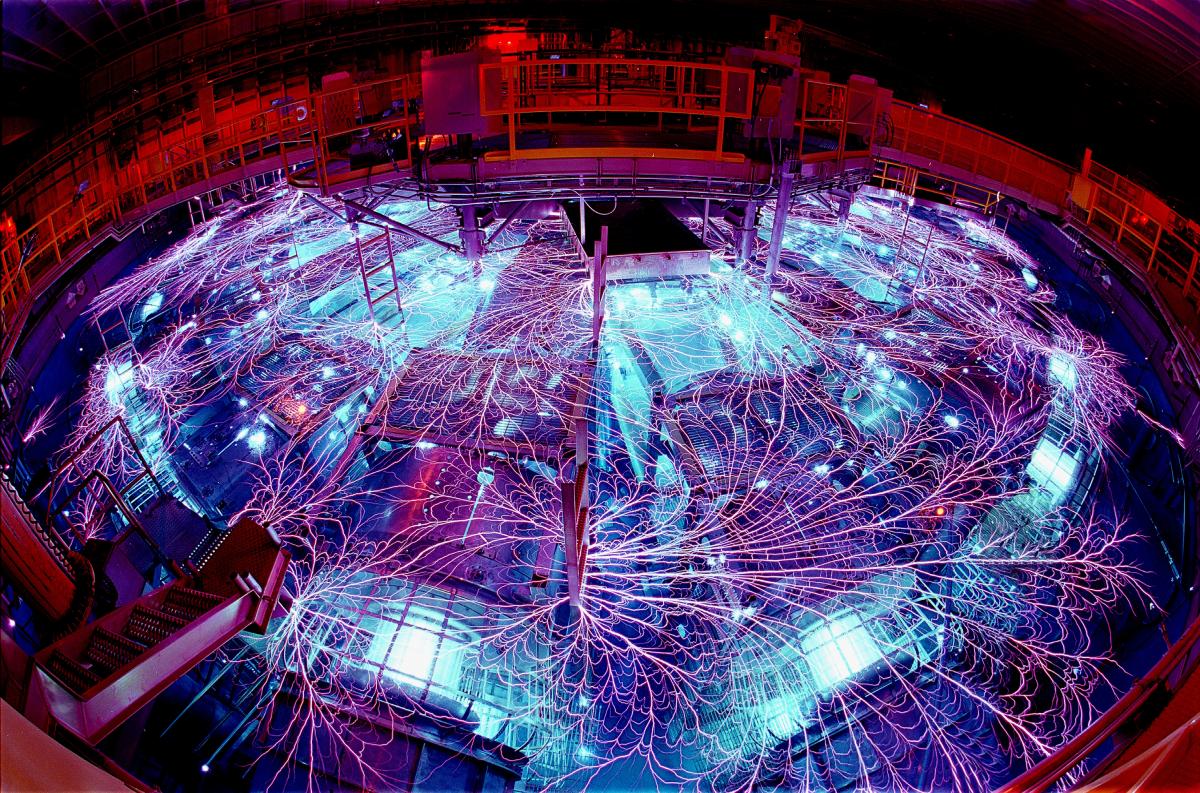
Due to a US moratorium on nuclear testing, laboratory simulations of nuclear weapon detonations remain the only available method for assessing the reliability of the nuclear stockpile as it ages. Sandia National Laboratory’s Z machine, the most powerful and efficient laboratory radiation source on earth, allows scientists to study materials under conditions similar to those produced by the detonation of nuclear weapons. While the Z machine produces virtually no radioactive waste, other national laboratories produce long-lived radioactive waste which needs to be stored in deep geological repositories. (Photo: Randy Montoya / Sandia National Laboratories)
Thus far, the best solution that researchers have arrived at is a system of durable, redundant markers that communicate the location of nuclear waste as unambiguously as possible. In effect this means building a monument designed to withstand the forces that have seen every other ancient monument on earth stripped and left to decay.
The authors of the Sandia report suggest that such a monument must communicate four layered messages of increasing complexity:
Level I: Rudimentary Information: ‘Something man-made is here’;
Level II: Cautionary Information: ‘Something man-made is here and it is dangerous’;
Level III: Basic Information: Tells what, why, when, where, who, and how; and
Level IV: Complex Information: Highly detailed written records, tables, figures, graphs, maps and diagrams.
(Source: Expert Judgment on Markers to Deter Inadvertent Human Intrusion into the Waste Isolation Pilot Plant, Sandia National Laboratories)
In Japan, the main structures of the Ise Grand Shrine have been rebuilt every 20 years in a practice that dates back 1,300 years. Through continual renewal, a line of tradition can be preserved.
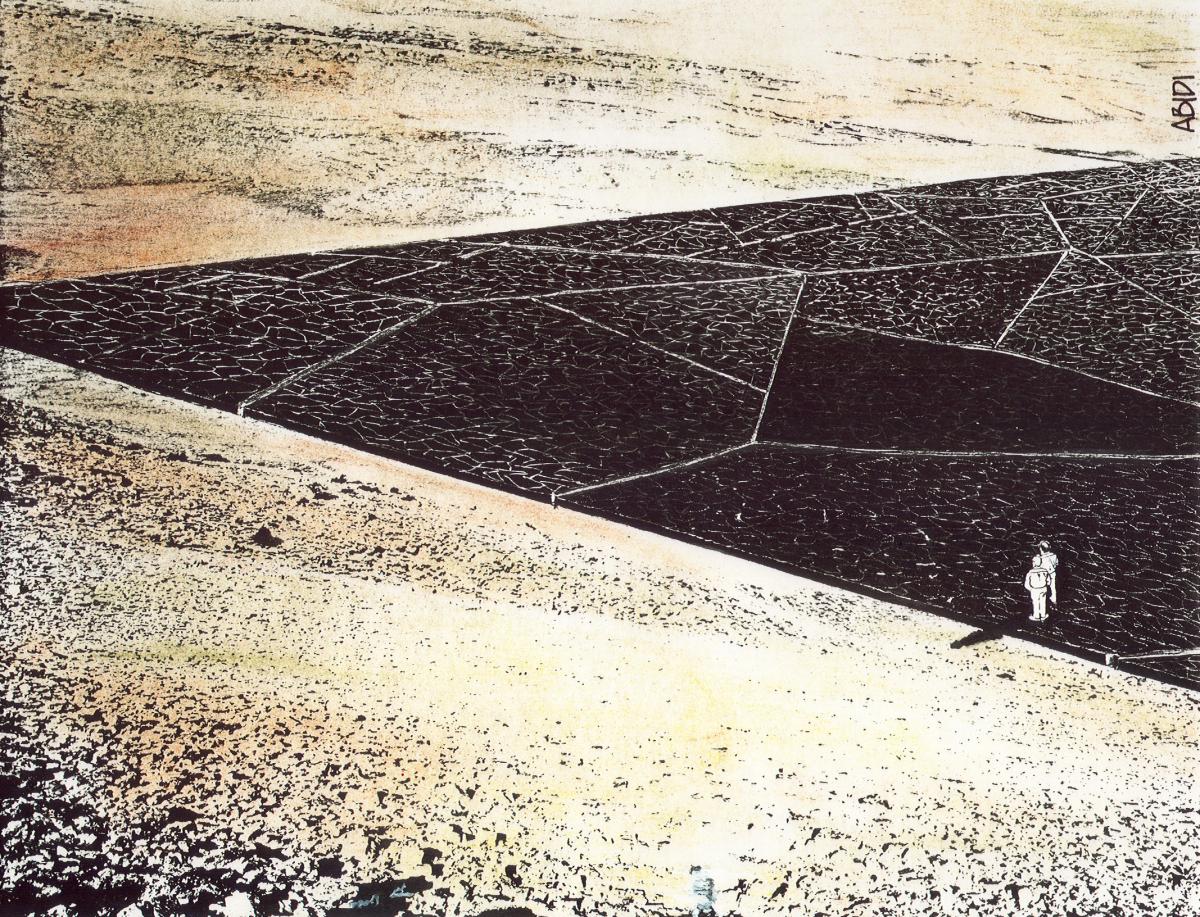
The US Department of Energy commissioned a multidisciplinary team to develop proposals for a system to identify radioactive waste hazards to for future cultures. Architect Michael Brill and his colleagues from the fields of anthropology, astronomy, materials engineering, linguistics and archaeology chose design archetypes that could be used to mark storage facilities for nuclear waste materials that remain lethal for millennia. The system is scheduled to be implemented by 2046. One of the proposals is Black Hole, a dark masonry slab which that absorbs the heat of the desert sun and radiates it back, creating a zone of uncomfortably high temperatures. (Concept: Mike Brill, Drawing: Safdar Abidi, Image courtesy of BOSTI.)
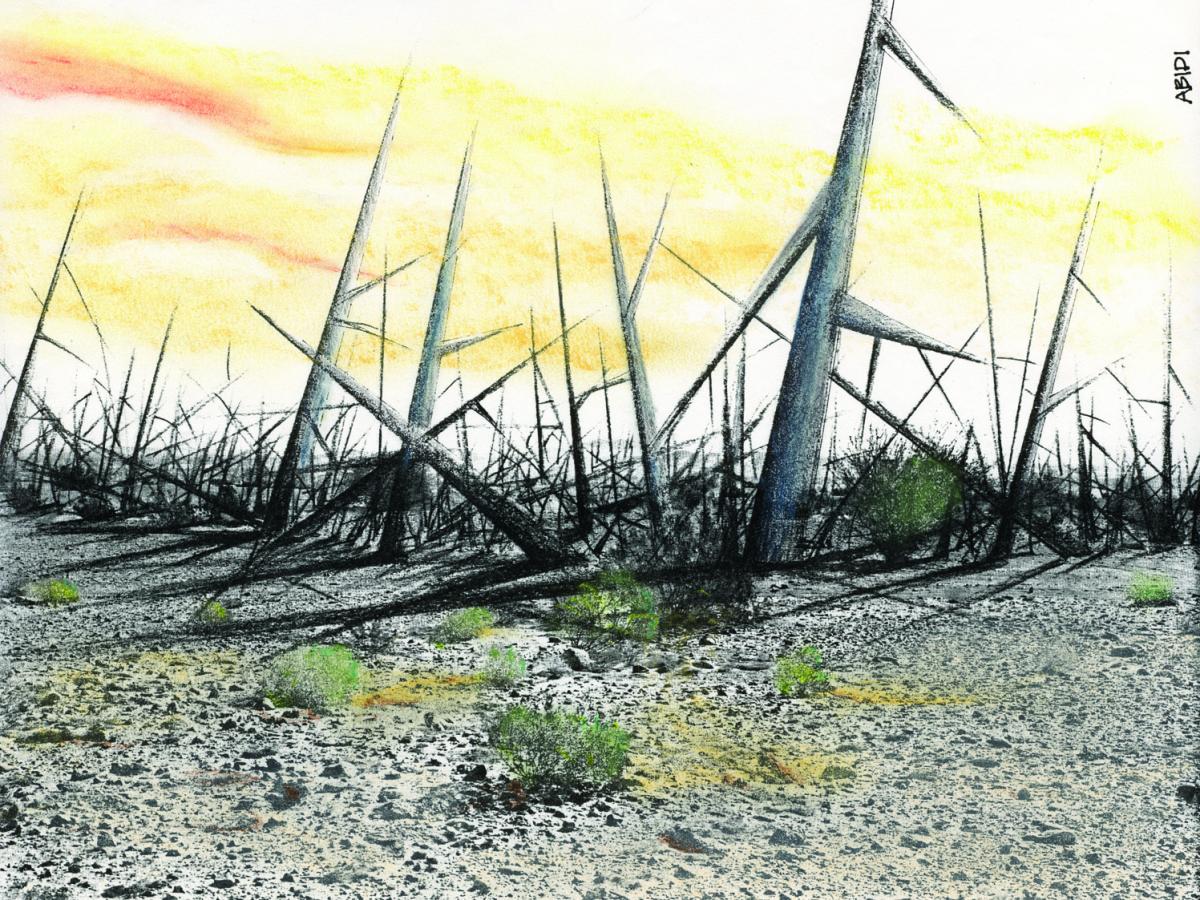
Landscape of Thorns, a random field or forest of random concrete thorns, 15m (50 ft) high, whose shapes suggest danger and bodily harm. (Concept: Mike Brill, Drawing: Safdar Abidi, Image courtesy of BOSTI.)
Layer I can be achieved by the survival of any clearly artificial construction. To protect against future vandals and resource hunters, the materials used in construction must be the least valuable possible, and the structures must be unattractive and difficult to dismantle. The Giza pyramids were once clad in gleaming white limestone, but those stones have long since been carried off for re-use in other building projects. The WIPP markers are to be earthworks made of common stone or concrete, materials not worth stealing. Their parts should be large, irregular and difficult to work with.
Layer II presents a bigger challenge. The Sandia report explores a variety of architectural constructions designed to give the marker a threatening appearance, many of which involve spikes and other sharp structures that seem to burst from the ground. Because WIPP is located in the desert, the stones may also be dyed black to make the area as hot and uncomfortable as possible.
Layer III functions on the principles of durability and redundancy. The messages should be repeated in many places, and the consensus is that carving them into rock or concrete will offer the best longevity, since even a heavily worn inscription can be revealed with rubbings. Noting the impossibility of predicting which languages will survive into the future or how they will evolve, the authors of the Sandia report recommend using English and Spanish, the dominant languages of the region, as well as Arabic, Chinese, French and Russian, the other languages of the United Nations. This would allow the same or similar texts to be used at other repositories around the world, multiplying the redundancy. This approach also increases the chances that at least one version of the message will remain intelligible, even creating a kind of Rosetta Stone for the future.
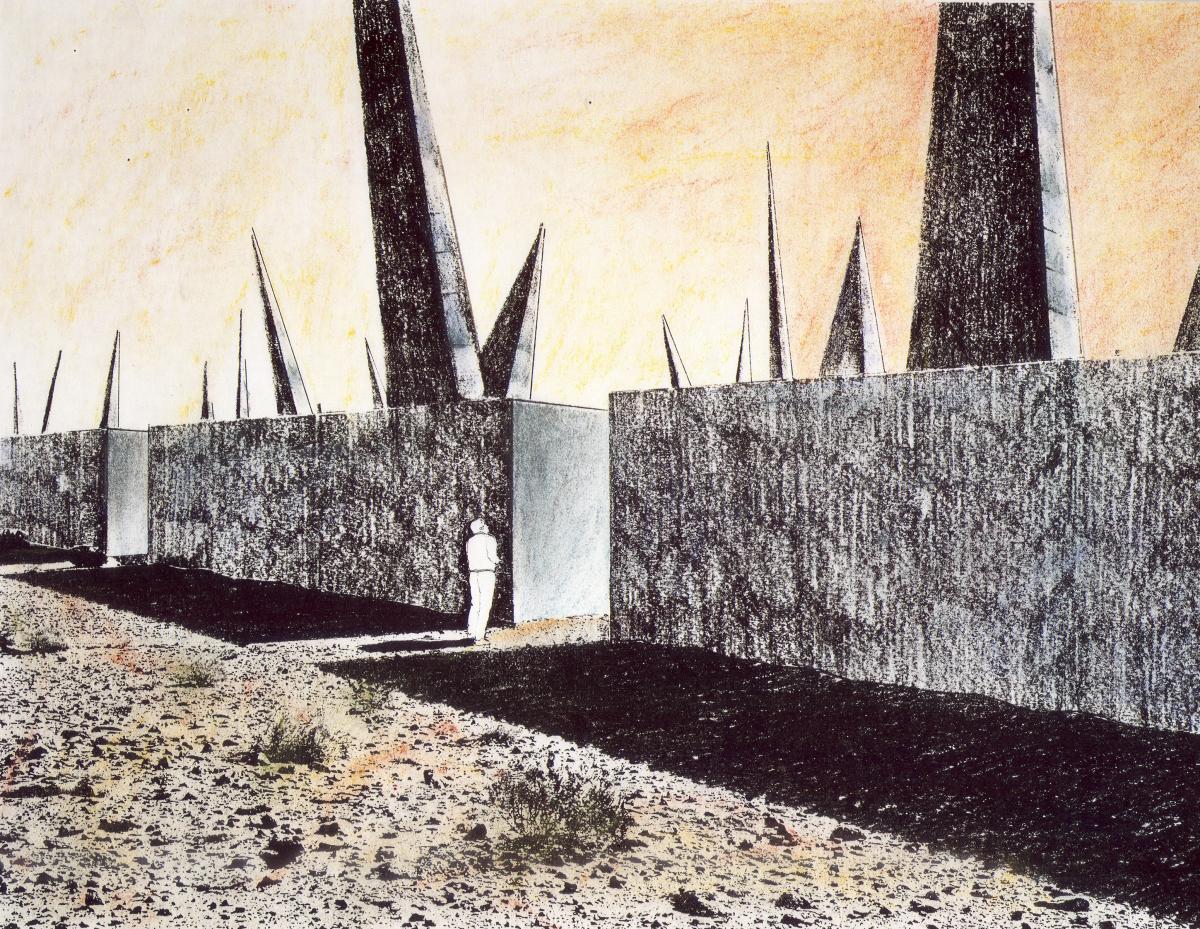
Another proposal is Spike Field, in which ominous, chaotically positioned stone spikes thrust upwards. (Concept: Mike Brill, Drawing: Safdar Abidi, Image courtesy of BOSTI.)
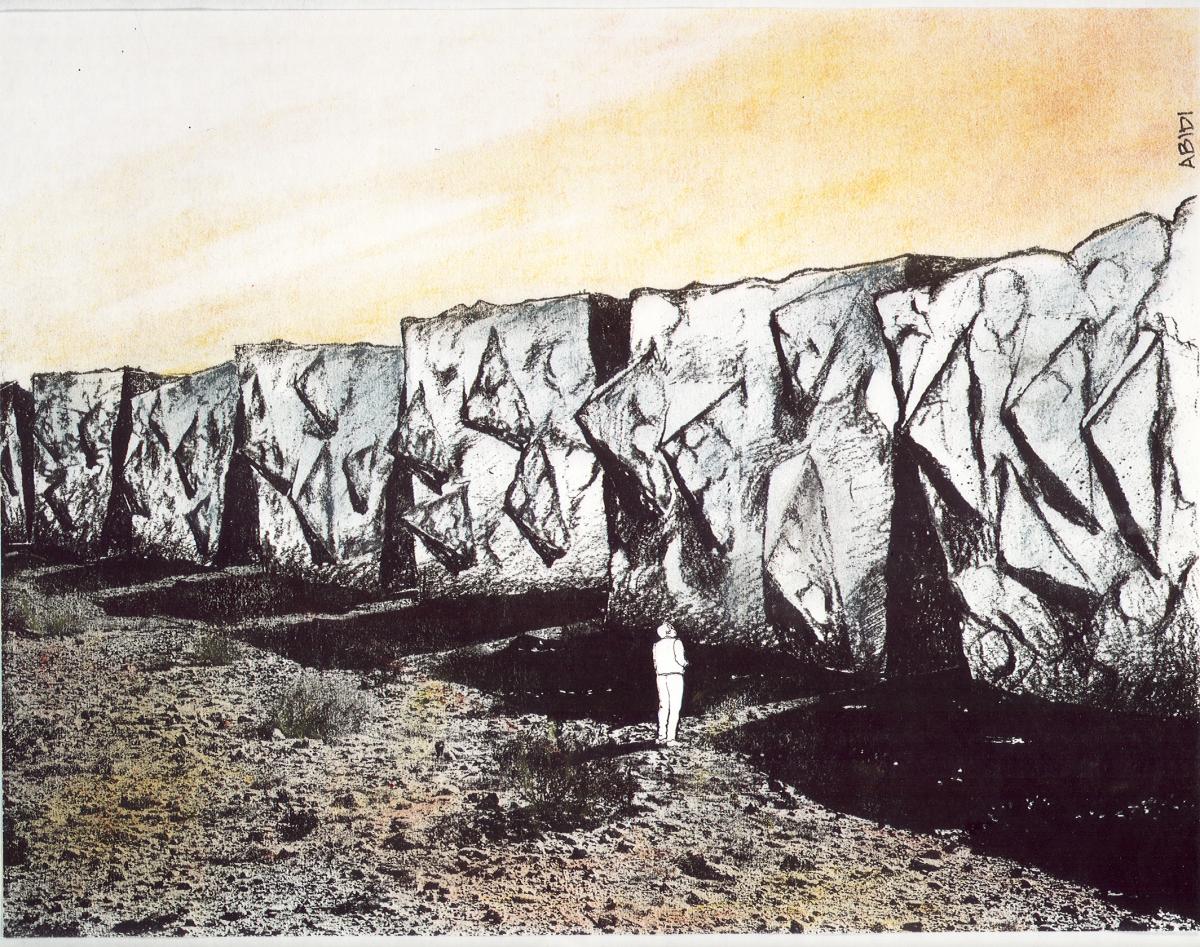
Forbidding Blocks is a proposal involving house-sized, stone-and-concrete blocks dyed black. The blocks are set in a deliberately irregular square grid, with narrow ‘streets’ running between them. The streets are hot and ominous, lead nowhere, and are too confining to live in, farm in, or even meet in. It is a massive effort to deny use of the space, intentionally chaotic, forbidding and uncomfortable. (Concept: Mike Brill, Drawing: Safdar Abidi, Image courtesy of BOSTI.)
Pictographs were also considered, but designing sufficiently universal images is extremely difficult. Despite today’s widespread globalisation, there is still considerable variation in symbolism between regions and cultures. The nuclear trefoil is a universal symbol now, but there is no guarantee that it will remain so for the next 10,000 years. Even if it does, displaying it at the surface, where there is no evidence of radioactivity, could cause future explorers to conclude that the danger had passed or never existed in the first place, undermining the credibility of the rest of the message.
Level III would also point the way to Level IV content, complete and detailed information sealed in deep storage archives. Here, again, redundancy and translation are key techniques. Providing as many versions of the same information as practicable raises the odds that at least some of it will be understood.
The recommendations of the Sandia report clearly show that the project is more a matter of experience design than architectural design. If the installation is successful it will guide future explorers through its successive layers until they understand the threat, heed the warning and turn away. It is this fine balance of attraction and subsequent repulsion that must ultimately be found for every nuclear waste repository in the world. As with any good architectural proposal, the details will be determined by local conditions as designers work to adapt fundamental principles to their particular sites.
The result will be a network of terrible monuments to this generation’s nuclear ambitions, many of them perhaps becoming some of the greatest wonders of the contemporary world. To survive twice the length of recorded history, they will necessarily be impressive and imposing attractions in their own right, a possibility that the Sandia report acknowledges.

